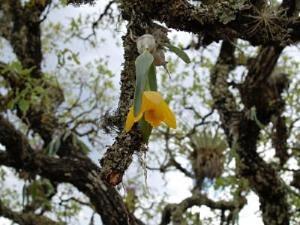Daniela Dutra
Other projects
11 Mar 2010
Resource Management, Trade and Conservation of Wild Harvested Epiphytic Orchid Species in Oaxaca, Mexico I
The overall aims of this project are to assess detailed information on population biology of wild orchid species that are being harvested for market sale and cultural celebrations. We can then to provide a series of recommendations for management and conservation efforts.

The harvest of wild plants is of cultural and economic importance for the lives of hundreds of millions of people worldwide. The potential for over-harvesting has generated concerns over the conservation of these species in many parts of the world. Epiphytes are distinctive components of tropical forests that are also important non-timber forest products (NTFPs). Epiphytic orchids are particularly threatened due to the high demand generated by their horticultural and cultural uses and to their vulnerability to harvest due to life history characteristics. Orchids are one of the few plant groups that receive blanket protection internationally due to conservation concerns generated by the high volume trade. Species in the Orchidaceae are highly vulnerable not only due to the demand, but also due to the reproductive biology that is characteristic of the family.

The state of Oaxaca encompasses the most biologically and culturally diverse region in Mexico. Various species of epiphytic orchids are harvested for market sale and for use in religious practices during local festivals. Local stakeholders in Oaxaca are often marginalized indigenous communities who depend on the harvest of orchid species for cultural traditions and economic reasons. Resource management strategies employed by stakeholders may play an important role on harvest pressure.
The overall aims of this project are to assess detailed information on orchid population biology, harvesting, trade, and ecological knowledge in order to provide a series of recommendations for management strategies in order to develop sustainable harvest estimations and in situ and ex situ conservation activities, such as seed and vegetative propagation programs.